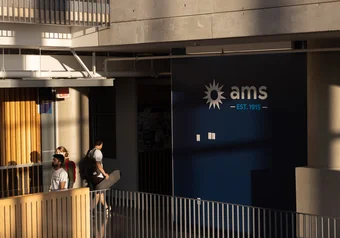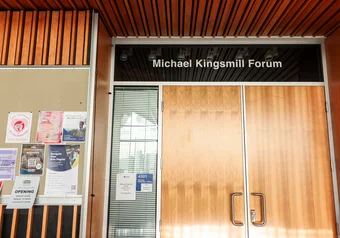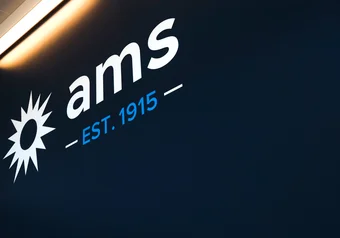On April 12, AMS Council approved a five-year strategic plan calling for accessible services, student well-being and a series of governance changes.
Here’s what you might have missed.
Bhangu and Du discuss the vision for AMS
The new five-year strategic plan — which was developed over a period of 18 months — is intended to define an overarching mission to “improve the quality of the academic, social and personal lives of UBC students.”
President Eshana Bhangu and VP Administration Ben Du co-authored the plan.
Bhangu said the plan is intended to help future AMS execs and councillors address recurring challenges the AMS faces including affordability, campus relevance and ineffective advocacy.
The plan also outlines five strategic priorities: exceptional programming, operational excellence, delivering results, cultivating belonging and collaborative leadership.
“Bringing like-minded people together is a core ingredient of a healthy campus community,” said Du, as he explained the priority for exceptional programming. He cited Block Party and Clubs Fair as opportunities to improve programming.
Bhangu said it is important for the AMS to not take for granted its seat at “every important decision-making table at the university.” She said the AMS needs to continue to strive for meaningful and effective results when it comes to its advocacy.
“A failure or win for the AMS in terms of one person … is a failure or win for the entire organization,” said Du on the goal of collaborative leadership.
The plan also includes a three-part implementation structure of accountability, adaptability and cooperation with the university.
In terms of accountability, the president and vice-presidents will report on their progress in executing the five priorities every year, according to Bhangu.
“It's really important that we’re not operating inside an echo chamber,” said Bhangu, adding the AMS will work to be cognizant of the landscape it is working in to avoid duplicating work that overlaps with UBC plans.
When asked why the plan was set for five years, Du said it was the optimal time period for creating a plan that balances continuity while not overreaching.
Bhangu also noted the unique nature of the strategic plan, in that it lacks a prescriptive nature with its vague language. The broad nature of the plan allows executives to implement the strategies within their own portfolios.
“This AMS strategic plan will act as the ultimate vision,” said Bhangu.
Following a brief discussion, councillors approved the plan.
Council passes new governance changes
Amid motions regarding executive removals and referendum petitions to align with current practices, councillors voted on a motion to broadly restructure the AMS’s governance.
The proposed governance restructure included renaming the Steering Committee to the Agenda Committee, removing requirements for most general committee bi-weekly meetings and giving the Student Life Committee more responsibility in AMS affairs.
Ahead of the meeting, one proposed change to the Advocacy Committee would have barred it from conversations surrounding “geopolitical issues” and “multinational corporations” that lie beyond the AMS’ objectives, sparking online controversy from campus social justice groups and former AMS execs.
The proposal also reduced the number of three student-at-large seats to one. However, the item was taken off the agenda a few hours before the meeting.
“This is proof that our collective voice has power,” wrote the UBC Social Justice Centre in a statement following the code change’s removal.
Regarding committee chairs, Science Councillor Katherine Feng asked why committee chair positions weren’t limited to voting members of the Council. She believed this position should be chaired by people who are “being really involved” and have a fiduciary duty to the AMS.
While Bhangu was not concerned with this change, saying that elected councilors are not necessarily engaged in their work, Feng’s request to refer the appointment change back to committee passed.
Councillors approved the rest of the motion later in the meeting.
Share this article
First online





